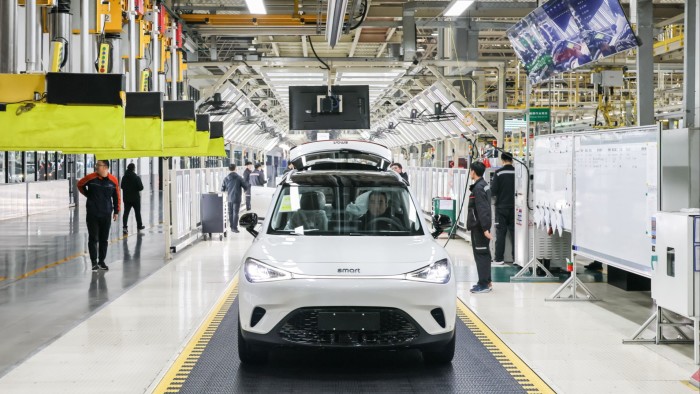Unlock the Editor’s Digest for free
Roula Khalaf, Editor of the FT, selects her favourite stories in this weekly newsletter.
The world, it was confirmed last week, breached 1.5C of warming last year for the first time. Climate change is happening even faster than expected. In determining what happens next, China will play a pivotal role. It is now by far the largest greenhouse gas emitter. But it is far ahead, too, in the race for supremacy in green technology. The International Energy Agency expects a striking 60 per cent of all renewable energy capacity installed worldwide between now and 2030 to come from China. It is the leading manufacturer of wind turbines, solar panels, electric vehicles and lithium-ion batteries. It dominates the downstream supply chain, too, with its control of critical minerals.
For western democracies, Beijing’s green ascendance sparks two big concerns. One is that its price advantage — achieved with hefty state support — will drive western rivals out of business and leave governments dependent on a strategic competitor for key technology. The other is that “smart” tech embedded in everything from EVs to turbines could pose security risks. The debate around UK chancellor Rachel Reeves’ visit to Beijing this weekend, over green energy and broader business links, highlights the dilemmas for Europe and the US.
China’s green advantage has deep roots. It was an early investor in critical minerals. As the energy transition gained steam, it stepped up green subsidies, tax credits and investments. Its annual clean energy investment rose by 40 per cent in 2023 to $890bn, becoming its main growth driver. Its green tech is being heavily deployed at home. Beijing achieved its target of having 1,200 gigawatts of installed solar and wind capacity — enough to power hundreds of millions of homes — six years early. EVs are expected to outsell petrol and diesel cars in China this year, 10 years ahead of its target.
Since China accounts for 30 per cent of global carbon emissions, the rest of the world clearly needs it to be ploughing ahead. But with global 2050 emission targets looking shaky — and the impact of warming becoming more evident, most recently in the devastating fires in Los Angeles — the rest of the world has little choice but to take advantage of low-cost Chinese wind and solar technologies. Limited access to critical minerals and a high cost of capital mean advanced economies cannot now meet their green goals without Beijing.
Given the risks of over-dependency, it makes sense for the US and Europe to continue developing and diversifying their own green supply chains. But trying to usurp China from behind protectionist walls is expensive and at odds with the urgency of climate change.
China has a surplus of green tech, so urging Beijing to share more intellectual property in exchange for market access is one approach. Rather than blocking Beijing’s green imports outright, national security concerns could be addressed by more robust tech inspections, ensuring local control over plants using Chinese products, and assessing whether vulnerable “smart” components can be isolated or removed.
Remaining open to Chinese low-cost green tech would allow countries to allocate more resources to areas where they still have comparative advantages. America leads in carbon capture and storage, and has unrivalled climate financing infrastructure. The EU is competitive in high-end climate research and development; in 2020, it issued more patents for green tech than the US or China. Britain is ahead in offshore wind, and Brazil is an expert in biofuels. Trade in these will also expedite the global transition.
China may be the leader in green tech, but the more important race is the one the planet is running, against the clock, to curb climate change. If it is to win it, countries will need to find strategies to work with Beijing in green tech, while minimising the risks.
Read the full article here

